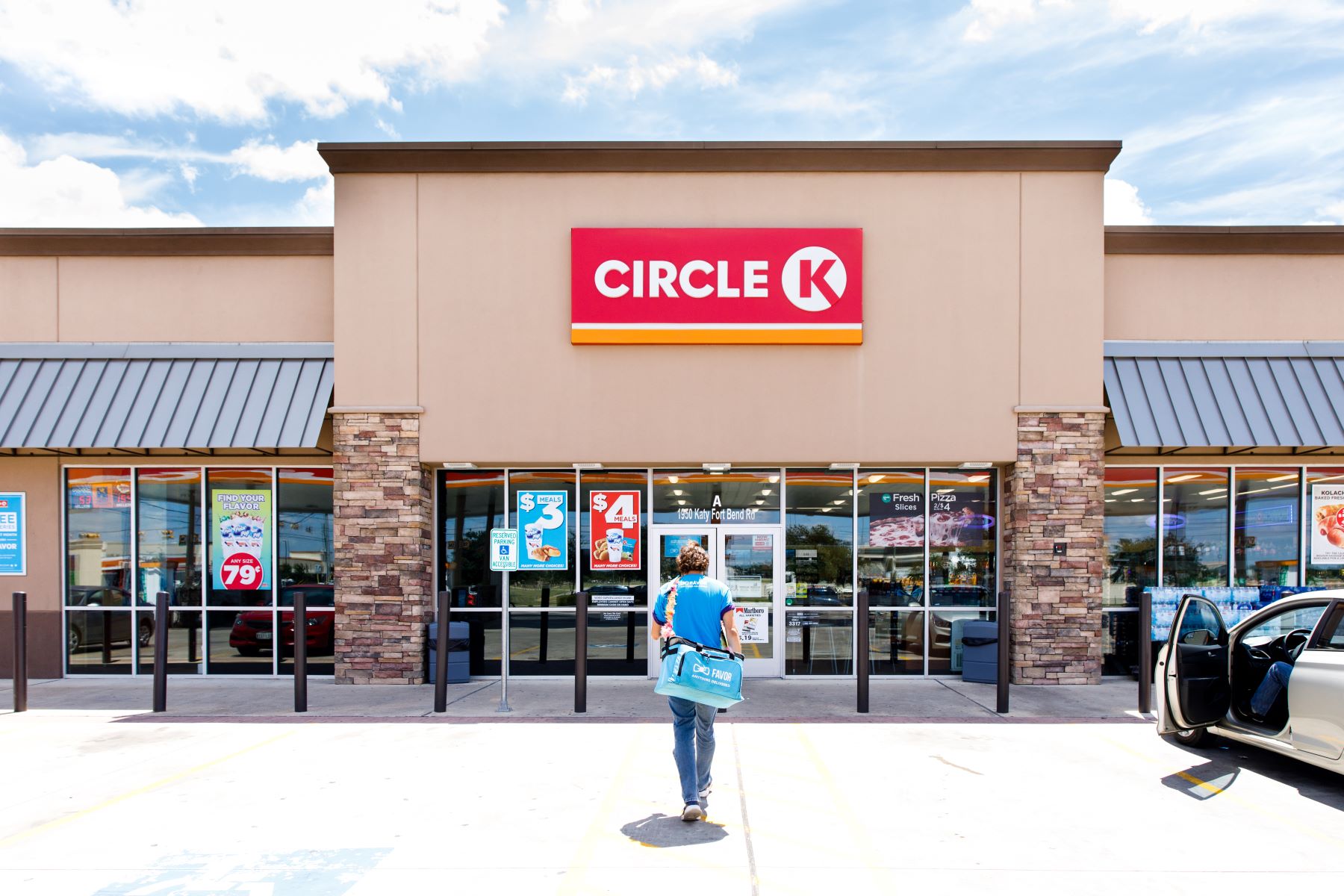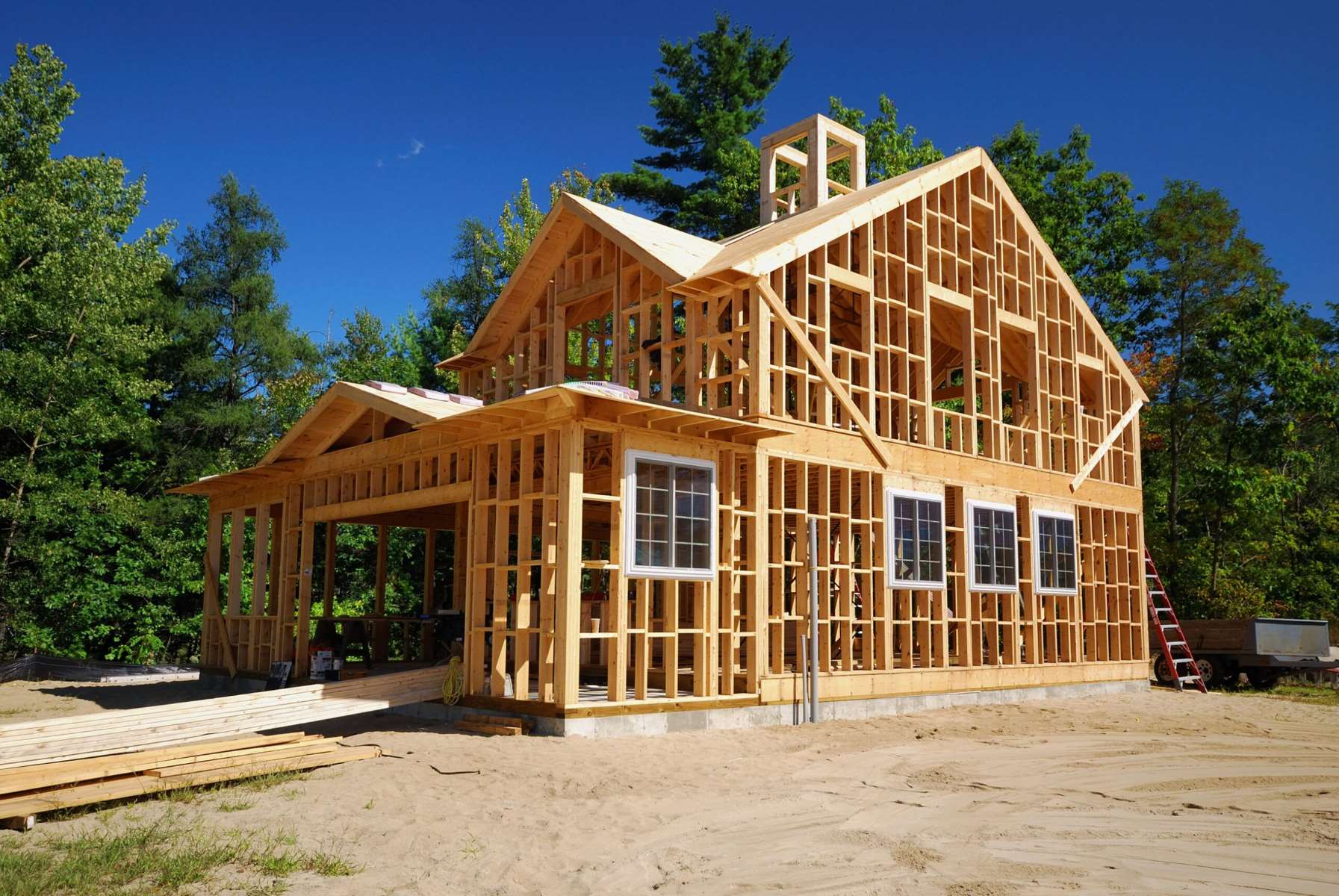Home>Real Estate>How To Flip Houses With No Money


Real Estate
How To Flip Houses With No Money
Published: February 25, 2024
Learn how to flip houses with no money in real estate. Discover creative financing strategies and expert tips to succeed in house flipping without a large initial investment.
(Many of the links in this article redirect to a specific reviewed product. Your purchase of these products through affiliate links helps to generate commission for Regretless.com, at no extra cost. Learn more)
Table of Contents
Introduction
Flipping houses can be an exhilarating and lucrative venture, offering the opportunity to transform rundown properties into stunning homes while reaping substantial profits. While the prospect of flipping houses with no money may seem daunting, it is indeed achievable with the right strategies and mindset. This article will delve into the essential steps and creative approaches that can empower aspiring real estate entrepreneurs to embark on this thrilling journey without a substantial initial investment.
Flipping houses involves purchasing a property, renovating it to enhance its value, and then selling it for a profit. This process demands a keen eye for potential, a solid understanding of the real estate market, and the ability to navigate negotiations and financing. While having a significant amount of capital can undoubtedly expedite the process, it is not a prerequisite for success in this venture. By leveraging innovative techniques and resourcefulness, individuals can effectively flip houses with minimal or no upfront funds.
In the following sections, we will explore various strategies for flipping houses with no money, including finding the right property, negotiating with sellers, exploring creative financing options, partnering with investors, leveraging sweat equity and DIY renovations, and ultimately selling the property for a substantial profit. Each step in this process presents unique challenges and opportunities, and by understanding and implementing these strategies effectively, individuals can overcome financial barriers and achieve success in the competitive world of real estate investment.
Flipping houses with no money requires a combination of determination, creativity, and strategic thinking. By embracing these principles and adopting a proactive approach, individuals can defy the conventional wisdom that substantial capital is a prerequisite for entering the real estate market. With the right guidance and a willingness to think outside the box, aspiring real estate entrepreneurs can embark on a thrilling journey of flipping houses with minimal financial resources, ultimately reaping the rewards of their hard work and ingenuity.
Read more: How To Make Money With Airbnb
Finding the Right Property
Finding the right property is a crucial first step in the house flipping process. It involves identifying a potential investment that aligns with your budget, renovation capabilities, and market demand. Here are some key strategies for finding the right property without a substantial upfront investment:
-
Scouting Distressed Properties: Look for distressed properties in desirable neighborhoods. These properties often have untapped potential and can be acquired at a lower cost due to their current condition. Keep an eye out for foreclosures, short sales, and properties in need of significant repairs.
-
Networking with Real Estate Agents: Establish connections with local real estate agents who specialize in distressed properties. They can provide valuable insights and alert you to potential investment opportunities before they hit the market. Building a strong rapport with these professionals can give you a competitive edge in finding lucrative deals.
-
Online Real Estate Platforms: Utilize online real estate platforms and auction websites to identify distressed properties that are available for purchase. These platforms often feature detailed property listings, allowing you to assess the potential of each investment opportunity from the comfort of your own home.
-
Driving for Dollars: Take to the streets and scout neighborhoods with high potential for property investment. Look for signs of neglect, such as overgrown lawns, boarded-up windows, or visibly distressed properties. This hands-on approach can lead to discovering hidden gems that may not be readily available through traditional listing channels.
-
Analyzing Market Trends: Stay informed about local real estate market trends and emerging neighborhoods. Understanding the demand for certain property types and the potential for appreciation can guide your decision-making process when scouting for the right investment opportunity.
-
Assessing Repair Costs: When evaluating potential properties, consider the estimated repair costs. Look for properties that require cosmetic updates rather than extensive structural repairs, as this can help minimize upfront expenses and maximize your return on investment.
By employing these strategies and maintaining a keen eye for potential investment opportunities, you can effectively identify the right property for your house flipping venture. The ability to recognize undervalued properties with significant potential for improvement is a fundamental skill that can set the stage for a successful and profitable house flipping endeavor.
Negotiating with Sellers
Negotiating with sellers is a critical aspect of the house flipping process, as it directly impacts the acquisition cost of the property and, consequently, the potential for a profitable resale. When aiming to flip houses with minimal upfront funds, effective negotiation skills become even more essential. Here's how to navigate the negotiation process with sellers to secure favorable terms and maximize your investment potential:
Establishing Rapport
Building a positive rapport with sellers can set the stage for successful negotiations. Approach interactions with sellers in a respectful and professional manner, demonstrating genuine interest in the property while conveying your commitment to a fair and mutually beneficial transaction. Establishing trust and rapport can create a conducive environment for constructive negotiations.
Research and Preparation
Prior to engaging in negotiations, conduct thorough research on the property and its market value. Understand the seller's motivations and the property's history to identify potential leverage points. Armed with this knowledge, you can present compelling arguments and substantiate your offer with relevant data, demonstrating your preparedness and commitment to a well-informed negotiation process.
Read more: How To Make A Money Bouquet
Emphasizing Value Proposition
When negotiating with sellers, emphasize the value you bring to the table. Highlight your expertise in property renovation and your ability to revitalize the property, thereby increasing its market appeal and value. Communicate your vision for the property and how your efforts will contribute to its transformation, ultimately benefiting both parties involved.
Creative Offer Structures
In situations where upfront funds are limited, consider proposing creative offer structures to the sellers. This may include seller financing, lease options, or subject-to transactions, providing alternative avenues for acquiring the property without a substantial initial investment. By presenting flexible and innovative offer structures, you can overcome financial barriers and secure favorable terms for the purchase.
Leveraging Market Conditions
Stay attuned to prevailing market conditions and trends, leveraging this knowledge to support your negotiation position. If the property has been on the market for an extended period or if there are indications of a motivated seller, use these factors to your advantage when negotiating the purchase price. Capitalizing on market dynamics can lead to more favorable terms for acquiring the property.
Flexibility and Patience
Approach negotiations with a degree of flexibility and patience. While aiming for a mutually beneficial outcome, be open to exploring various negotiation paths and potential compromises. By demonstrating flexibility and patience, you can foster a collaborative negotiation environment, increasing the likelihood of reaching an agreement that aligns with your house flipping objectives.
By implementing these strategies and approaching negotiations with a well-prepared and strategic mindset, individuals can effectively navigate the process of acquiring properties for house flipping, even with limited initial funds. The ability to negotiate favorable terms with sellers is a pivotal skill that can significantly impact the overall success and profitability of a house flipping venture.
Read more: How To Easily Draw Money Towards You
Creative Financing Options
When pursuing house flipping with minimal upfront capital, exploring creative financing options becomes instrumental in overcoming financial barriers and acquiring investment properties. These innovative approaches can provide avenues for funding the purchase and renovation of properties, ultimately facilitating the successful execution of a house flipping venture. Here are several creative financing options to consider:
-
Seller Financing: In a seller financing arrangement, the seller acts as the lender, allowing the buyer (in this case, the house flipper) to make payments directly to the seller instead of obtaining a traditional mortgage. This approach can be particularly advantageous when traditional financing avenues are inaccessible, as it offers flexibility in negotiating the terms of the loan, including the interest rate and repayment schedule.
-
Hard Money Loans: Hard money loans are asset-based loans secured by the property being purchased. Unlike traditional bank loans, hard money lenders focus on the property's value rather than the borrower's credit history or financial standing. While the interest rates on hard money loans are typically higher, they offer a quicker approval process and can be viable for house flippers aiming to swiftly acquire properties without a substantial initial investment.
-
Private Lenders: Engaging with private lenders, such as individual investors or private lending firms, can provide access to alternative funding sources for house flipping projects. Private lenders may offer more flexible terms and expedited funding, making them an attractive option for individuals seeking financing without the stringent requirements of traditional lending institutions.
-
Partnership Arrangements: Collaborating with equity partners or joint venture partners can offer a mutually beneficial financing solution for house flipping endeavors. By partnering with individuals or entities willing to invest capital in the project, house flippers can leverage external funds to acquire and renovate properties, sharing the risks and rewards of the investment.
-
Home Equity Line of Credit (HELOC): For individuals with existing property assets, a HELOC can serve as a valuable financing tool for house flipping. By leveraging the equity in their primary residence or other properties, house flippers can access a line of credit to fund the acquisition and renovation of investment properties, utilizing their existing real estate holdings to facilitate new ventures.
-
Crowdfunding: Utilizing crowdfunding platforms tailored to real estate investment, such as peer-to-peer lending or real estate syndication, can provide access to a diverse pool of investors willing to contribute funds to house flipping projects. Crowdfunding offers a collective financing approach, allowing multiple investors to participate in funding a single property or a portfolio of properties.
By exploring these creative financing options, individuals can navigate the challenges of house flipping with limited initial funds, opening doors to diverse funding sources and innovative approaches to property acquisition and renovation. Each financing avenue presents unique advantages and considerations, empowering aspiring real estate entrepreneurs to pursue house flipping ventures with resourcefulness and strategic financial planning.
Partnering with Investors
Partnering with investors can be a game-changing strategy for individuals aiming to flip houses with minimal upfront capital. By forging strategic alliances with investors who are willing to provide financial support and expertise, house flippers can unlock new opportunities and mitigate the financial constraints typically associated with property acquisition and renovation. This collaborative approach not only facilitates access to funding but also enables the pooling of resources and skills, ultimately enhancing the potential for successful house flipping ventures.
When seeking to partner with investors, it is essential to approach the process with a clear understanding of the value proposition you bring to the table. Investors are often attracted to partnerships that offer a compelling vision, a well-defined strategy, and a demonstrated ability to execute profitable real estate projects. As a house flipper, showcasing your expertise in property evaluation, renovation, and market analysis can instill confidence in potential investors, illustrating your capacity to maximize the return on their investment.
In addition to financial backing, investors can contribute valuable insights, industry connections, and specialized knowledge that can significantly impact the success of a house flipping endeavor. Collaborating with investors who possess complementary skills and experience can bolster the overall capabilities of the partnership, leading to more informed decision-making and efficient project execution.
When approaching potential investors, it is crucial to articulate a comprehensive business plan that outlines the investment opportunity, the projected returns, and the risk mitigation strategies. Transparency and professionalism in presenting the proposed partnership can instill trust and confidence in potential investors, fostering a solid foundation for a mutually beneficial collaboration.
Furthermore, establishing clear and mutually agreed-upon terms is paramount in formalizing the partnership. This includes delineating each party's roles and responsibilities, defining the profit-sharing structure, and outlining the exit strategy. Clarity in these aspects can mitigate potential conflicts and ensure that the partnership operates smoothly, with aligned objectives and expectations.
Ultimately, partnering with investors offers a pathway to leverage external resources and expertise, enabling house flippers to pursue ambitious projects and scale their real estate ventures. By cultivating strong partnerships based on trust, shared vision, and mutual benefit, individuals can transcend financial limitations and embark on lucrative house flipping endeavors that yield substantial returns for all involved parties.
Sweat Equity and DIY Renovations
Sweat equity and do-it-yourself (DIY) renovations represent a cornerstone of successful house flipping endeavors, particularly when operating with limited initial funds. This approach involves leveraging personal skills, labor, and creativity to enhance the value of a property through hands-on renovation and improvement efforts. By investing time, effort, and expertise into the renovation process, house flippers can significantly reduce costs while maximizing the potential resale value of the property.
One of the primary advantages of sweat equity and DIY renovations is the ability to minimize reliance on external contractors and labor expenses. House flippers can take a proactive role in executing renovation tasks, such as painting, flooring installation, landscaping, and minor repairs, thereby reducing the need for costly professional services. This hands-on approach not only contributes to cost savings but also allows for greater control over the quality and timeline of the renovation process.
Moreover, DIY renovations empower house flippers to infuse their unique vision and personal touch into the property, distinguishing it from competing listings in the market. By incorporating creative design elements, innovative solutions, and personalized craftsmanship, individuals can elevate the aesthetic appeal and functionality of the property, ultimately enhancing its market desirability and potential for a lucrative resale.
In addition to the tangible cost savings, sweat equity and DIY renovations offer a valuable opportunity for skill development and knowledge acquisition. House flippers can acquire new competencies in construction, design, and project management, honing their abilities as versatile real estate entrepreneurs. This hands-on experience not only enriches their expertise but also equips them with a deeper understanding of the renovation process, enabling more informed decision-making and efficient project execution in future endeavors.
Furthermore, the sweat equity invested in the renovation process can serve as a compelling selling point when marketing the property to potential buyers. Highlighting the personal dedication and craftsmanship that went into the property's transformation can resonate with prospective purchasers, fostering a sense of authenticity and value that transcends the physical attributes of the home. This emotional connection can be a powerful differentiator in a competitive real estate market, influencing buyers' perceptions and willingness to pay a premium for a meticulously renovated property.
In essence, sweat equity and DIY renovations embody the spirit of resourcefulness and hands-on commitment, enabling house flippers to overcome financial constraints and achieve remarkable transformations in the properties they undertake. By embracing this approach, individuals can harness their creativity, skills, and determination to breathe new life into distressed properties, ultimately reaping the rewards of their labor and ingenuity in the form of profitable house flipping ventures.
Selling for Profit
The culmination of a successful house flipping venture lies in the strategic and lucrative sale of the renovated property. As the final phase of the process, selling for profit demands astute planning, market awareness, and effective marketing strategies to maximize the return on investment. Here are the essential considerations and steps involved in selling a flipped property for substantial profit.
Pricing Strategy
Determining the optimal listing price is a critical aspect of selling a flipped property. It requires a comprehensive analysis of comparable properties in the area, considering factors such as size, condition, and recent sales. By strategically pricing the property to reflect its renovated features and market appeal, house flippers can attract potential buyers while maximizing the perceived value of the investment.
Staging and Presentation
Presenting the property in its best light is paramount to capturing the interest of prospective buyers. Thoughtful staging, decluttering, and enhancing curb appeal can significantly impact the property's visual appeal and create a favorable impression. By showcasing the property's renovated features and highlighting its unique selling points, house flippers can elevate its desirability and command attention in a competitive real estate market.
Targeted Marketing
Crafting a targeted marketing strategy is essential to reaching potential buyers and generating interest in the property. Leveraging professional photography, virtual tours, and compelling listing descriptions can effectively showcase the property's transformation and allure. Additionally, utilizing online platforms, social media, and real estate networks can expand the property's visibility, attracting a diverse pool of interested buyers.
Negotiation and Closing
Navigating the negotiation process with potential buyers requires a balanced approach that aims to secure a favorable sale price while accommodating the buyer's considerations. Effective communication, transparency, and a willingness to explore mutually beneficial terms can facilitate a successful negotiation. Additionally, ensuring a smooth and efficient closing process, including necessary documentation and legal formalities, is crucial to finalizing the sale and realizing the anticipated profit.
Market Timing
Understanding market dynamics and seasonal trends can influence the timing of the property's listing and sale. By aligning the sale with favorable market conditions and heightened buyer activity, house flippers can capitalize on increased demand and potentially secure a quicker and more profitable sale. Strategic timing can play a pivotal role in optimizing the property's resale value and overall profitability.
Post-Sale Reflection
Upon the successful sale of the flipped property, reflecting on the entire house flipping process can provide valuable insights for future endeavors. Analyzing the outcomes, identifying areas of improvement, and acknowledging the achievements can inform subsequent projects and contribute to ongoing refinement of house flipping strategies.
In essence, selling a flipped property for profit encompasses a multifaceted approach that integrates market knowledge, presentation finesse, and negotiation acumen. By meticulously orchestrating the sale process and leveraging the property's enhanced appeal, house flippers can realize the full potential of their investment, culminating in a rewarding and profitable transaction.
Conclusion
Flipping houses with minimal upfront funds is a testament to the power of creativity, resourcefulness, and strategic thinking in the realm of real estate investment. Throughout this journey, aspiring real estate entrepreneurs have the opportunity to defy conventional wisdom and embark on a thrilling venture that transcends financial limitations. By leveraging innovative strategies and a proactive mindset, individuals can navigate the challenges of property acquisition, renovation, and resale, ultimately reaping the rewards of their hard work and ingenuity.
The process of flipping houses with no money begins with the fundamental step of finding the right property. Scouting distressed properties, networking with real estate agents, and analyzing market trends are pivotal in identifying lucrative investment opportunities that align with budgetary constraints and renovation capabilities. Effective negotiation with sellers further facilitates the acquisition of properties, allowing house flippers to secure favorable terms and overcome financial barriers through creative offer structures and market dynamics.
Exploring creative financing options, such as seller financing, hard money loans, and partnerships, provides diverse avenues for funding property acquisition and renovation. By tapping into these alternative funding sources, individuals can transcend the limitations of traditional financing and access the capital necessary to propel their house flipping endeavors.
Partnering with investors offers a collaborative pathway to leverage external resources and expertise, enabling house flippers to pursue ambitious projects and scale their real estate ventures. By cultivating strong partnerships based on trust, shared vision, and mutual benefit, individuals can transcend financial limitations and embark on lucrative house flipping endeavors that yield substantial returns for all involved parties.
Sweat equity and DIY renovations represent a cornerstone of successful house flipping endeavors, allowing individuals to infuse their unique vision and personal touch into the properties they undertake. This hands-on approach not only contributes to cost savings but also empowers house flippers to develop new skills, enrich their expertise, and create emotionally resonant properties that captivate potential buyers.
The culmination of a successful house flipping venture lies in the strategic and lucrative sale of the renovated property. By implementing a comprehensive pricing strategy, staging the property effectively, and crafting a targeted marketing approach, individuals can maximize the property's resale value and realize the full potential of their investment.
In conclusion, flipping houses with no money is a testament to the transformative power of ingenuity, determination, and strategic collaboration. By embracing these principles and adopting a proactive approach, aspiring real estate entrepreneurs can defy financial barriers and achieve remarkable success in the competitive world of real estate investment. This journey not only yields financial rewards but also fosters personal and professional growth, positioning individuals to thrive in the dynamic landscape of real estate entrepreneurship.











